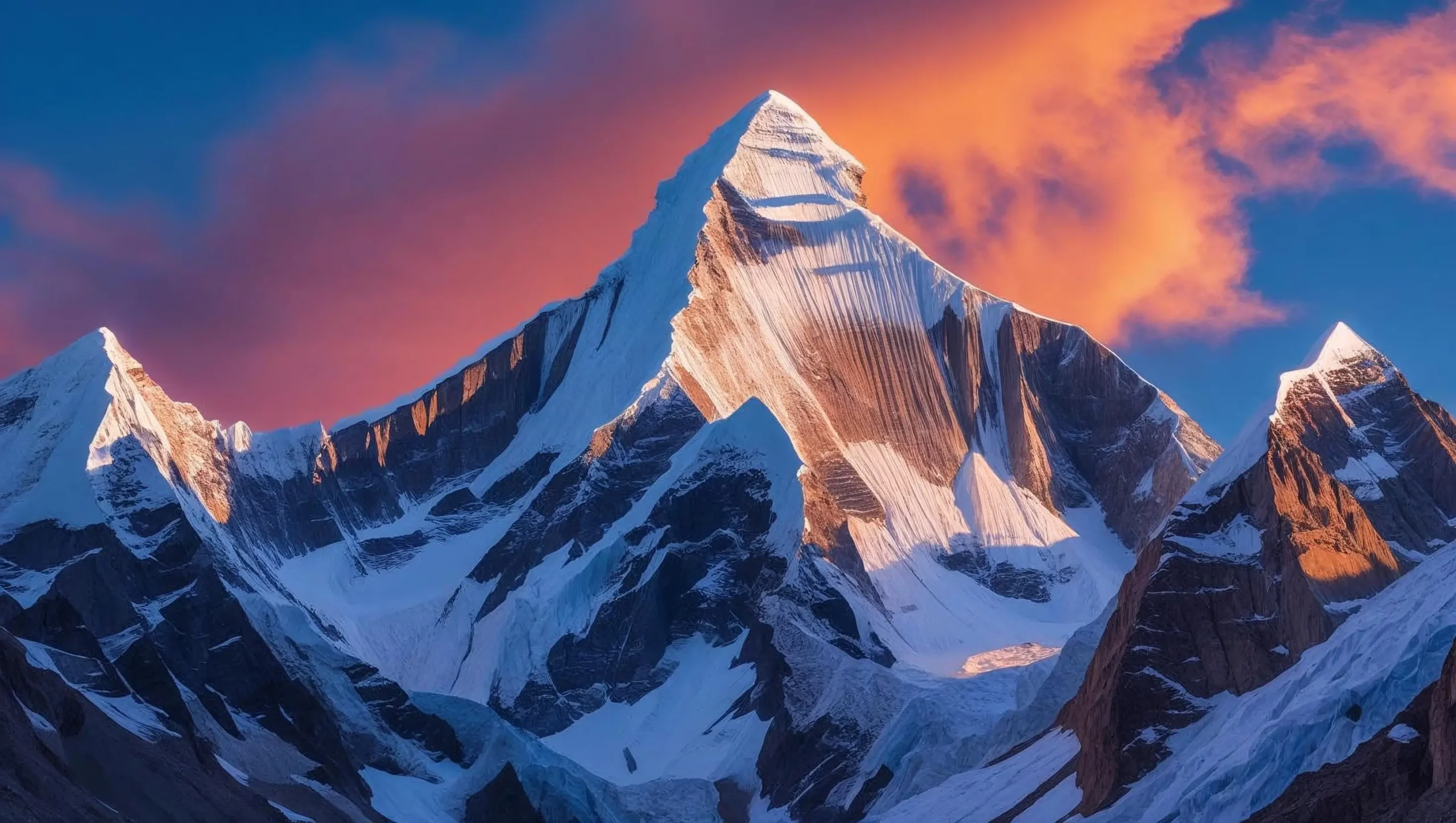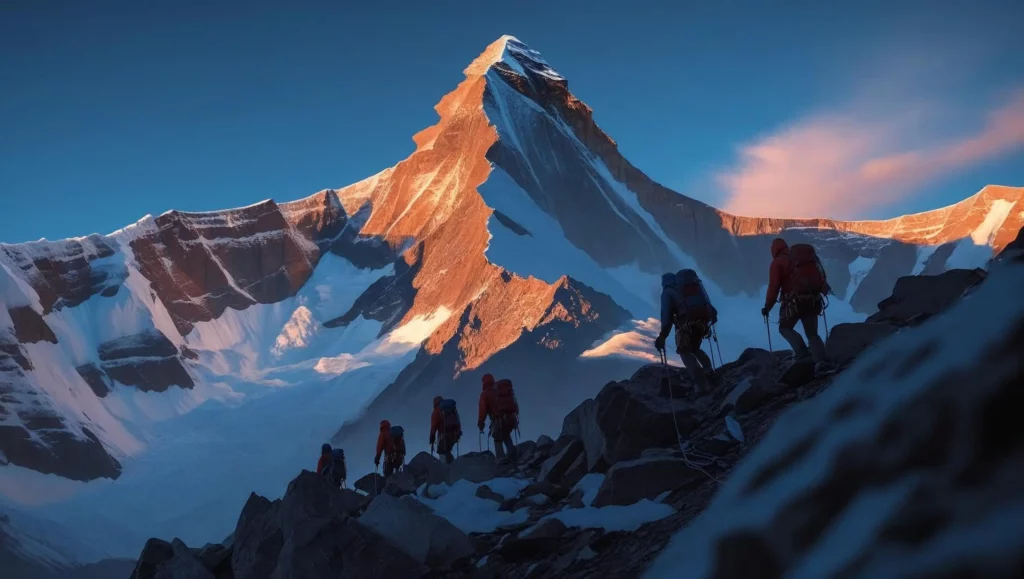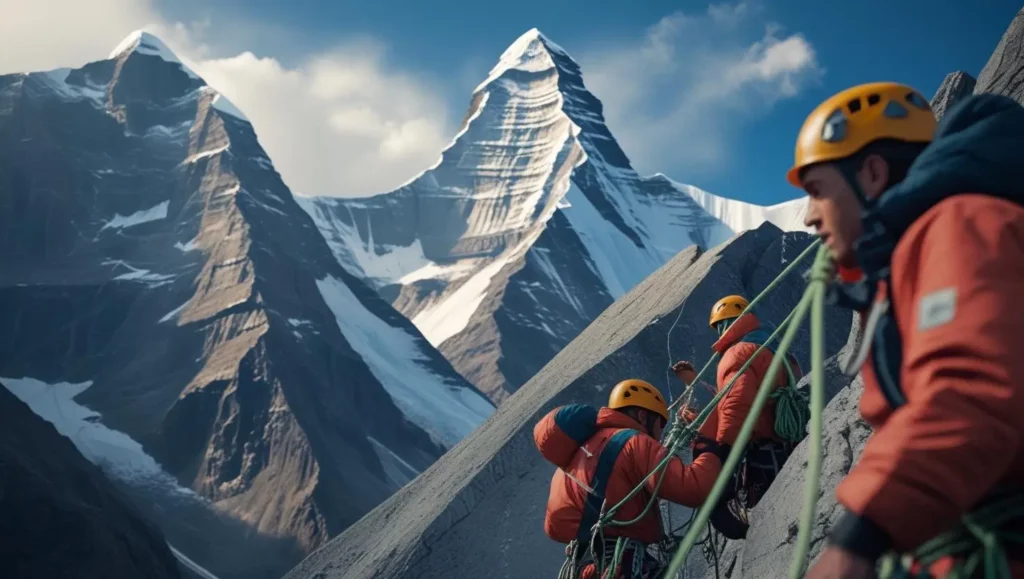Conquering Ama Dablam: The Ultimate Guide to Climbing the World’s Most Iconic Peak
Nestled in the heart of the Himalayas, Ama Dablam stands as a beacon for adventurers and mountaineers alike, its striking silhouette captivating climbers from around the globe. Known for its breathtaking beauty and technical challenges, this iconic peak is often referred to as the “Matterhorn of the Himalayas.” Conquering Ama Dablam is not just a test of physical strength; it’s a journey of mental endurance, cultural immersion, and personal discovery. Whether you’re an experienced climber or a passionate novice, our ultimate guide will equip you with everything you need to know, from planning your ascent to navigating the treacherous routes. Prepare to explore the unique challenges this majestic mountain presents, the breathtaking landscapes you’ll encounter, and the rich cultural tapestry of the Sherpa communities that surround it. Join us as we delve into the adventure of a lifetime and unveil the secrets to successfully summiting this legendary peak. Your Ama Dablam experience starts here!

Table of contents
The Significance of Ama Dablam in Climbing History
Best Time to Climb Ama Dablam
Preparing for Your Climb: Essential Gear and Equipment
Physical Training and Conditioning for Ama Dablam
Route Options: The Southwest Ridge vs. Other Routes
Navigating the Climbing Permits and Regulations
Acclimatization Strategies for High-Altitude Climbing
The Significance of Ama Dablam in Climbing History
Ama Dablam, rising to an awe-inspiring 6,812 meters, is often regarded as one of the most beautiful mountains in the world. Its name, which translates to “Mother’s Necklace,” is derived from the long ridges on each side of the peak, which resemble the arms of a mother protecting her child, and a hanging glacier that is thought to be like a “dablam” – a traditional Sherpa necklace. This peak, with its striking appearance and technically demanding climb, has become a symbol of mountaineering elegance and challenge.
The first successful ascent of Ama Dablam was in 1961 by a team led by Sir Edmund Hillary, a name synonymous with Himalayan exploration. The New Zealand and American team took the Southwest Ridge route, which remains the most popular path to the summit today. This historic climb not only marked a significant achievement in mountaineering history but also opened the door for countless adventurers to follow in their footsteps. Each year, climbers from around the world are drawn to Ama Dablam, seeking to test their skills and endurance against its formidable slopes.
Ama Dablam’s prominence in climbing history is not only due to its challenging routes but also because of its location in the Khumbu region of Nepal. This area is home to the Sherpa people, who have been integral to mountaineering expeditions for decades. Their unparalleled knowledge of the terrain, combined with their cultural heritage, has made them invaluable partners in the pursuit of summiting the world’s highest peaks. Climbing Ama Dablam offers an opportunity to engage with this rich cultural history, making the journey to its summit an experience that goes beyond the physical challenge.

Best Time to Climb Ama Dablam
Timing is crucial when planning an expedition to Ama Dablam. The best climbing seasons are pre-monsoon (April to May) and post-monsoon (September to October). These periods offer the most stable weather conditions, which are essential for a safe and successful climb. During these months, the skies are typically clear, providing magnificent views and allowing for better navigation of the mountain’s technical routes.
In the pre-monsoon season, climbers benefit from warmer temperatures and longer daylight hours. This period also sees fewer climbers, which can result in a less crowded and more enjoyable experience on the mountain. However, the risk of avalanches can be higher due to the melting snow, so it’s essential to stay updated on weather forecasts and avalanche reports. The post-monsoon season, on the other hand, offers cooler temperatures and more settled snow conditions. The autumn months are particularly favored for their breathtaking views of the surrounding peaks, making it an ideal time for photography and scenic appreciation.
Regardless of the season, it’s important to be prepared for rapidly changing weather conditions. The Himalayas are known for their unpredictable climate, and storms can develop with little warning. Climbers must be vigilant and flexible with their schedules, allowing for potential delays due to weather. Proper planning and timing can significantly enhance the chances of a successful and safe ascent of Ama Dablam, ensuring that climbers can fully appreciate the beauty and challenge of this iconic peak.
Preparing for Your Climb: Essential Gear and Equipment
Embarking on a climb of Ama Dablam requires meticulous preparation, particularly when it comes to gear and equipment. The right gear can make the difference between a successful summit and a dangerous situation. It is essential to invest in high-quality equipment that can withstand the harsh conditions of high-altitude climbing. This includes technical climbing gear, clothing, and camping equipment designed for extreme weather.
Technical climbing gear is paramount for tackling Ama Dablam’s challenging routes. This includes items such as ice axes, crampons, harnesses, carabiners, and ropes. An ice axe is crucial for self-arrest in case of a fall, while crampons provide the necessary traction on icy and snowy surfaces. A sturdy harness and reliable carabiners are essential for safe climbing, particularly on the exposed sections of the route. Additionally, a high-quality climbing helmet is vital for protection against falling rocks and ice.
Clothing for high-altitude climbing must be carefully selected to ensure warmth, breathability, and moisture-wicking properties. Layering is key, with a base layer to wick away sweat, an insulating layer to retain body heat, and a waterproof and windproof outer layer to protect against the elements. Down jackets and pants are also recommended for their exceptional warmth-to-weight ratio. Proper footwear is equally important; mountaineering boots should be insulated, waterproof, and compatible with crampons. Don’t forget essential accessories such as gloves, hats, and sunglasses to protect against the cold and UV rays at high altitudes.
Camping equipment for Ama Dablam should be lightweight yet robust enough to endure the harsh conditions. A four-season tent, high-altitude sleeping bag, and insulated sleeping mat are essential for a comfortable night’s rest. Cooking equipment, including a reliable stove and fuel, is necessary for preparing meals at high camps. Hydration systems, such as insulated water bottles and hydration bladders, are crucial for maintaining proper fluid intake. Ensuring that all gear and equipment are in excellent condition and suited for high-altitude climbing is a fundamental step in preparing for a successful Ama Dablam expedition.

Physical Training and Conditioning for Ama Dablam
Climbing Ama Dablam is a physically demanding endeavor that requires a high level of fitness and endurance. Proper training and conditioning are essential to prepare your body for the rigors of high-altitude climbing. A well-rounded training program should include cardiovascular exercises, strength training, and specific climbing practice to build the necessary skills and stamina.
Cardiovascular fitness is crucial for sustaining long periods of exertion at high altitudes. Activities such as running, cycling, and swimming are excellent for building cardiovascular endurance. Incorporating interval training and hill workouts can further enhance your aerobic capacity and leg strength, which are vital for ascending steep slopes and carrying heavy loads. Aim to engage in cardiovascular exercises at least three to four times a week, gradually increasing the intensity and duration as your fitness improves.
Strength training is equally important for preparing to climb Ama Dablam. Focus on building core strength, as a strong core helps maintain balance and stability on uneven terrain. Exercises such as planks, sit-ups, and leg raises are beneficial for core conditioning. Additionally, upper and lower body strength training should not be neglected. Squats, lunges, deadlifts, and step-ups are effective for strengthening the legs, while pull-ups, push-ups, and rows are excellent for upper body strength. Incorporating weight training into your routine two to three times a week can significantly enhance your overall climbing performance.
Specific climbing practice is essential for developing the technical skills required for Ama Dablam. Spend time rock climbing and ice climbing to become proficient in using gear such as ropes, harnesses, and crampons. If possible, participate in mountaineering courses that cover essential skills like crevasse rescue, glacier travel, and navigation. Practicing these skills in a controlled environment will build your confidence and competence, ensuring you are well-prepared for the challenges of the climb. Combining cardiovascular fitness, strength training, and technical skill development is the key to a successful and enjoyable Ama Dablam expedition.
Route Options: The Southwest Ridge vs. Other Routes
Ama Dablam offers several route options for climbers, with the Southwest Ridge being the most popular and frequently attempted. This route was first ascended in 1961 and has since become the classic path to the summit. The Southwest Ridge is renowned for its technical challenges, requiring climbers to navigate steep rock, ice, and snow sections. Despite its difficulty, the route is well-defined and offers fixed ropes in key areas, providing additional safety and support.
The route begins at Base Camp, situated at 4,570 meters, and progresses through a series of camps. Camp 1, located at approximately 5,700 meters, is reached after a challenging ascent that includes crossing a glacier and negotiating steep rock slabs. From Camp 1, climbers make their way to Camp 2 at around 6,000 meters, navigating through mixed terrain of rock and ice. The final push to Camp 3 at 6,400 meters involves a steep climb up the Grey Tower, a prominent rock feature. The summit attempt from Camp 3 is a thrilling yet demanding climb, requiring careful navigation of exposed ridges and technical ice sections.
While the Southwest Ridge is the most popular route, other routes also exist for those seeking different challenges. The North Ridge, for example, offers a less crowded alternative with its own set of technical difficulties. This route involves navigating through steep ice slopes and challenging rock sections, requiring advanced climbing skills and experience. The East Ridge, another less frequented option, presents a more remote and adventurous climb, with fewer fixed ropes and added logistical challenges. Regardless of the chosen route, each path to Ama Dablam’s summit demands a high level of technical proficiency, physical fitness, and mental resilience.
Choosing the right route depends on various factors, including your climbing experience, technical skills, and personal preferences. The Southwest Ridge remains the most accessible and well-supported option, making it an ideal choice for many climbers. However, those seeking a more solitary and adventurous experience may opt for the North or East Ridge. Thorough research and careful consideration of the route options will help ensure a safe and rewarding climb, allowing you to fully embrace the unique challenges and beauty of Ama Dablam.
Navigating the Climbing Permits and Regulations
Climbing Ama Dablam requires obtaining several permits and adhering to specific regulations set by the Nepalese government. These permits are essential for ensuring the safety and sustainability of mountaineering activities in the region. Navigating the permit process can be complex, but with proper planning and organization, it can be managed efficiently.
The first permit required is the Ama Dablam climbing permit, issued by the Nepal Mountaineering Association (NMA). The cost of this permit varies depending on the season, with higher fees during the peak climbing months of April, May, October, and November. In addition to the climbing permit, climbers must also obtain a Sagarmatha National Park entry permit, as Ama Dablam is located within the boundaries of this protected area. This permit helps support conservation efforts and the maintenance of the park’s natural environment.
Another important permit is the Trekkers’ Information Management System (TIMS) card, which is mandatory for all trekkers and climbers in Nepal. The TIMS card provides valuable information for tracking and managing the movement of tourists in the region, contributing to safety and emergency response efforts. It is obtained through registered trekking agencies or the Nepal Tourism Board.
In addition to these permits, climbers must also comply with various regulations and guidelines. This includes hiring a licensed guide or liaison officer, who plays a crucial role in ensuring safety and adherence to local regulations. The guide or liaison officer is responsible for coordinating logistics, managing communication with authorities, and providing support throughout the expedition. Furthermore, climbers are required to adhere to environmental guidelines, such as proper waste disposal and minimizing the impact on the local ecosystem.
Navigating the permit process and understanding the regulations is a vital aspect of planning your Ama Dablam expedition. By ensuring all necessary permits are obtained and following the established guidelines, climbers can contribute to the sustainable and responsible practice of mountaineering in the Himalayas, while also enhancing their own safety and experience on the mountain.
Acclimatization Strategies for High-Altitude Climbing
Acclimatization is a critical aspect of high-altitude climbing, as it allows the body to adapt to the reduced oxygen levels encountered at higher elevations. Proper acclimatization strategies are essential for minimizing the risk of altitude sickness and ensuring a successful ascent of Ama Dablam. The process involves gradually ascending to higher altitudes while giving the body time to adjust to the changing conditions.
One effective acclimatization strategy is the “climb high, sleep low” approach. This involves ascending to a higher altitude during the day and then descending to a lower altitude to sleep. This method helps the body adjust to the lower oxygen levels encountered at higher elevations while allowing for better rest and recovery at lower altitudes. For example, climbers may spend the day climbing from Base Camp to Camp 1 and then return to Base Camp to sleep. This process is repeated over several days, gradually increasing the altitude at which the climbers spend their days and nights.
Another important aspect of acclimatization is maintaining proper hydration and nutrition. Dehydration can exacerbate the symptoms of altitude sickness, so it is crucial to drink plenty of fluids, even if you do not feel thirsty. Aim to consume at least 3-4 liters of water per day, and consider using electrolyte supplements to replace lost minerals. Additionally, maintaining a balanced diet with adequate carbohydrates, proteins, and fats is essential for providing the energy needed for sustained physical exertion at high altitudes.
Monitoring for symptoms of altitude sickness is also a key part of the acclimatization process. Common symptoms include headaches, nausea, dizziness, and shortness of breath. If any of these symptoms occur, it is important to rest and allow the body time to adjust. In severe cases, descending to a lower altitude may be necessary to alleviate symptoms. Using medications such as acetazolamide (Diamox) can also help prevent and manage altitude sickness, but it should be used under the guidance of a medical professional.
By following these acclimatization strategies, climbers can enhance their body’s ability to cope with the challenges of high-altitude climbing. Proper acclimatization not only reduces the risk of altitude sickness but also improves overall performance and safety, increasing the likelihood of a successful and enjoyable climb of Ama Dablam.

Safety Tips and Emergency Protocols on Ama Dablam
Safety is paramount when undertaking a climb as challenging as Ama Dablam. The mountain’s technical routes and high-altitude environment require careful planning and adherence to safety protocols. By following essential safety tips and being prepared for emergencies, climbers can mitigate risks and ensure a safer ascent.
One of the most crucial safety tips is to always climb with a partner or as part of a team. Having a reliable climbing partner provides mutual support and assistance in case of emergencies. It is essential to maintain clear communication with your team members, using radios or other communication devices to stay in contact, especially during critical sections of the climb. Establishing a clear plan and ensuring everyone is aware of the route, potential hazards, and emergency protocols is also vital.
Weather conditions can change rapidly in the Himalayas, making it important to stay informed about the latest weather forecasts. Avoid climbing during severe weather conditions, such as storms or heavy snowfall, which can increase the risk of avalanches and other hazards. If inclement weather is expected, be prepared to delay your ascent and seek shelter at a lower altitude until conditions improve. Always carry essential safety gear, including a first aid kit, avalanche beacon, and a GPS device, to enhance your safety in case of emergencies.
Understanding and recognizing the signs of altitude sickness is another critical safety aspect. Symptoms such as headaches, nausea, and dizziness should not be ignored. If altitude sickness symptoms occur, it is important to rest and give your body time to acclimatize. In severe cases, descending to a lower altitude is necessary to prevent life-threatening conditions such as high-altitude pulmonary edema (HAPE) or high-altitude cerebral edema (HACE). Familiarize yourself with the use of medications such as acetazolamide (Diamox) and dexamethasone, which can help manage altitude sickness under medical guidance.
In the event of an emergency, having a well-defined evacuation plan is essential. This includes knowing the location of the nearest medical facilities, having access to emergency contacts, and understanding the procedures for requesting a helicopter evacuation if necessary. Ensure that your climbing team is trained in basic first aid and rescue techniques, as prompt and effective response can make a significant difference in an emergency situation.
By prioritizing safety and being prepared for potential emergencies, climbers can reduce the risks associated with high-altitude climbing. Following safety tips and protocols not only enhances your own safety but also contributes to the overall well-being of your climbing team, ensuring a more successful and enjoyable Ama Dablam expedition.

Conclusion: Your Journey to the Summit of Ama Dablam
Embarking on an expedition to Ama Dablam is a journey of unparalleled adventure and personal growth. This iconic peak, with its striking beauty and technical challenges, offers a unique opportunity for climbers to test their limits and experience the majesty of the Himalayas. From the initial planning stages to the final push to the summit, every aspect of the climb requires careful preparation, dedication, and resilience.
Understanding the significance of Ama Dablam in climbing history provides a deeper appreciation for the mountain and the achievements of those who have come before. Choosing the best time to climb, preparing the necessary gear and equipment, and undergoing rigorous physical training are all essential steps in ensuring a successful ascent. Navigating the permit process and adhering to regulations help protect the environment and contribute to the sustainability of mountaineering in the region.
Acclimatization strategies and safety protocols are critical for managing the challenges of high-altitude climbing. By following these guidelines and being prepared for emergencies, climbers can mitigate risks and enhance their overall experience. Whether you choose the classic Southwest Ridge route or explore alternative paths, the journey to the summit of Ama Dablam is a testament to your perseverance and passion for adventure.
As you stand on the summit of Ama Dablam, surrounded by the breathtaking panorama of the Himalayas, you will have achieved more than just a physical feat. You will have embarked on a journey of self-discovery, pushing the boundaries of what you believed possible. The memories and experiences gained from this expedition will stay with you for a lifetime, inspiring future adventures and a deeper connection to the mountains.
In conclusion, conquering Ama Dablam is not just about reaching the summit; it is about embracing the entire journey, from the preparation and challenges to the triumphs and reflections. With the right preparation, mindset, and support, you can successfully navigate the path to the top of this iconic peak, creating memories that will last a lifetime. Your Ama Dablam experience starts here, and the adventure of a lifetime awaits.
